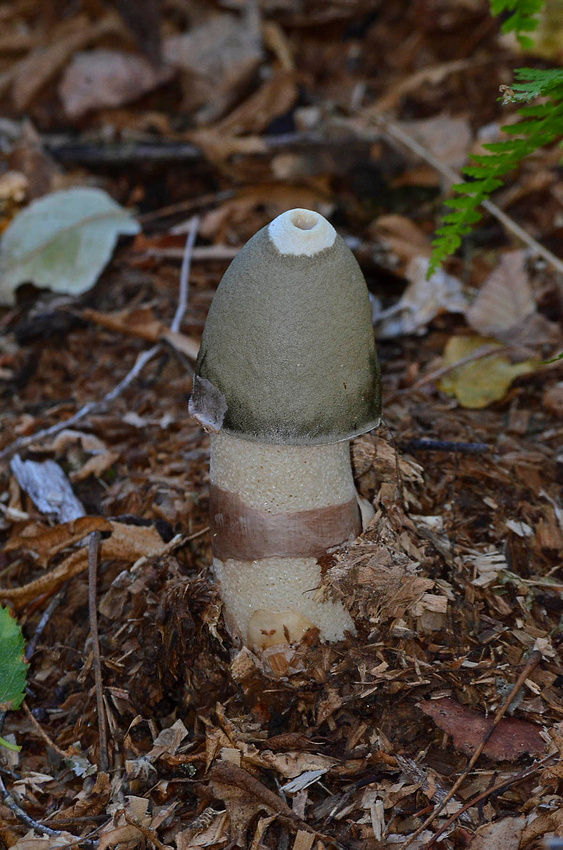Definitely X-rated
 Phallus ravenelii, Bell
Phallus ravenelii, Bell
For the first time in what seems like months, it rained steadily and hard all day. But by late afternoon, it had tapered off enough to allow a quick walk, and along the edge of the trail at the Bell Cedar Swamp preserve, I noticed a patch of new mushrooms that had been encouraged by the moisture to send forth a fresh crop of spore-disseminating-structures, a.k.a., fungus caps. These come in all shapes, colors, and sizes—some common, some, well, let us say, uncomfortable. This one, which belongs to the aptly named genus Phallus, is a mushroom that has a long history of making observers embarrassed. Citing a book titled Mr. Bloomfield's Garden: The Mysterious World of Mushrooms, Molds, and Mycologists, by N.P. Money, uber mycology writer Michael Kuo relates the angst Charles Darwin's granddaughter Etty felt over the appearance of these phallic symbols. She apparently so despised the group, which are known as "stinkhorns" because they smell bad in order to attract flies, which then spread the spores, that she conducted an "antifungal jihad" against the mushrooms in order to protect "purity of thought among her female servants." The common engenderer of impurity is called Phallus impudicus. This species is the less common, but, dare I say it, equally potent, Phallus ravenelii. Tell you kids to look the other way.